NGC 884/869 - Perseus Double Cluster
Introduction | Map | Find/Identify | Sketch | My
Best Own Photos | My
Own
Observations | References || Appendix: My Own Photos
On this page I collect my observations of the double star cluster NGC
884/869 in the constellation Perseus.
Introduction
The open double star cluster NGC 884/869 (Chi/H Persei) in Perseus is
considered to be a first-rate deep sky object. Therefore, it has received
a 5-star rating from Stoyan. Supposedly, the double cluster should be seen
with the naked eye, but I cannot confirm this. In small binoculars, however,
it can already be seen well - particularly, as a double cluster. In a
small telescope, both clusters are, according to Stoyan, "clusters of
40-50 stars, together in a 1.5° field of view". And this means,
that you cannot observe both together in the eVscope. Iit is a little better
with the eVscope 2 and possible with the Vespera (Pro).
NGC 884/869
Size: 25' / 20' (Stoyan)
Distance: 7,600/6,800 light years (Stoyan)
Ranking: ***** (Stoyan)
Map
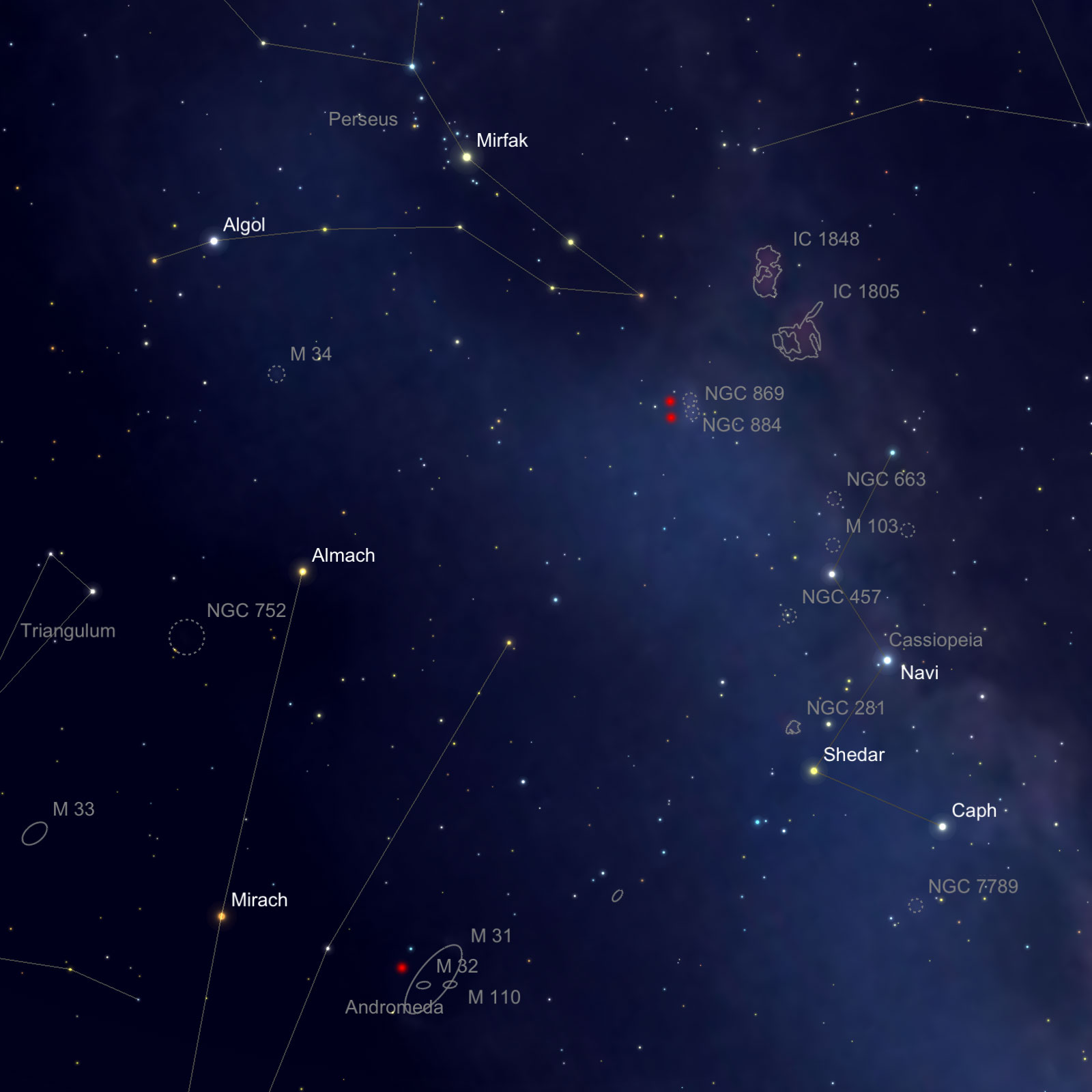
Map: Perseus Double Cluster NGC 884/869 (between Perseus and Cassiopeia)
and Andromeda Galaxy M 31 (Image Courtesy of
SkySafari Astronomy, www.simulationcurriculum.com)
Find/Identify
Find: During my "winter observations" in February 2017,
I tried to find the double cluster NGC
884/869 in Perseus. I was able to find the open clusters, but
using my binoculars, I was not able to tell which of the two clusters I
was viewing, or even both. The same was true for the 100P telescope. Using
the GoTo mount, however, revealed that I probably saw more or less both
clusters. This is one of the advantages of such a GoTo mount.
Identify: In the meantime, a kind of oval above the double
cluster (see the arrows in the map below) helps me identify it and find the
Muscle Man St 2 (but the oval is less evident on star charts than I see it
in the telescope/binoculars):
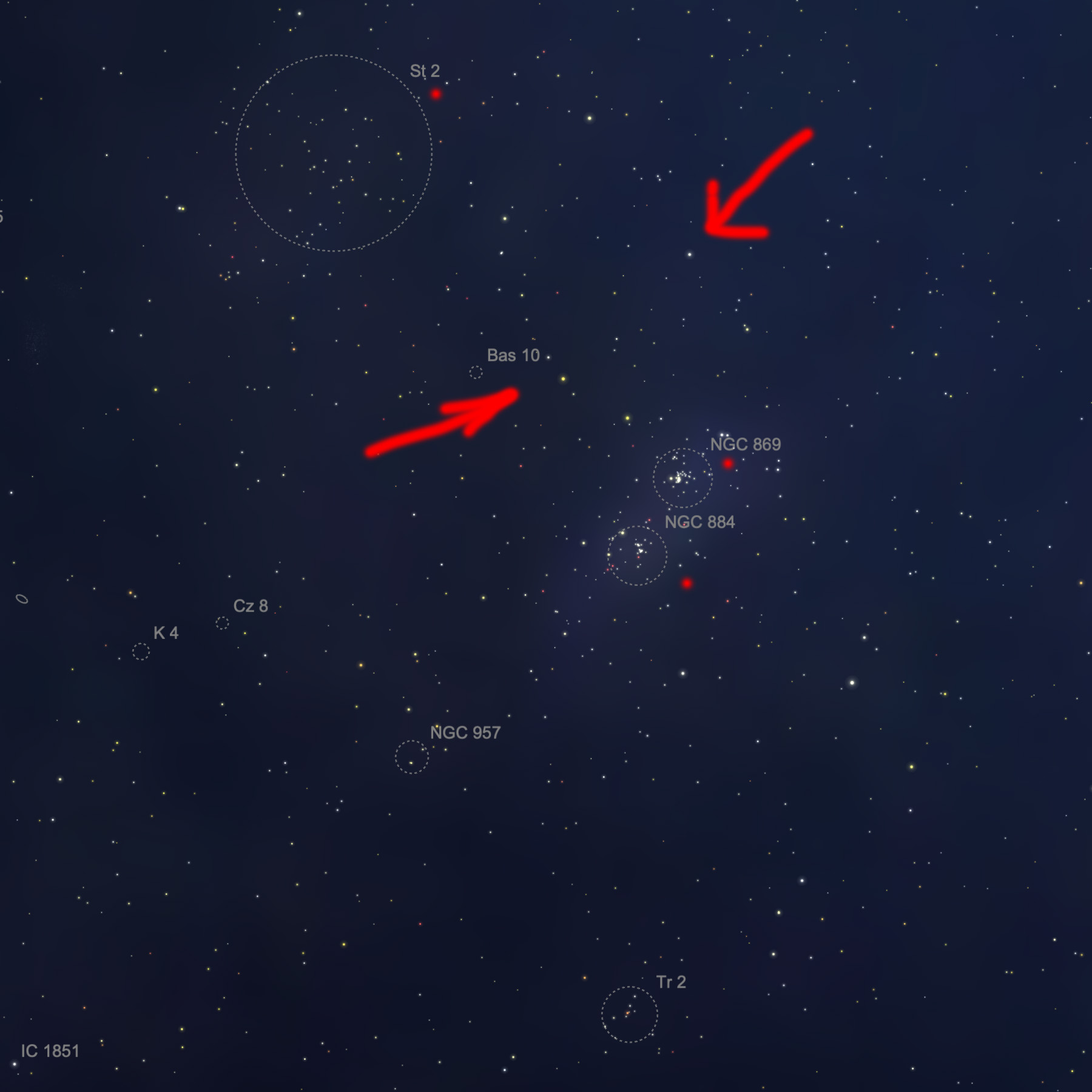
(Image Courtesy of SkySafari Astronomy, www.simulationcurriculum.com)
Sketch
The sketch by Michael Vlasov (DeepSkyWatch.com)
provides a rough impression of what I observed (my impression was much fainter
than the sketch):
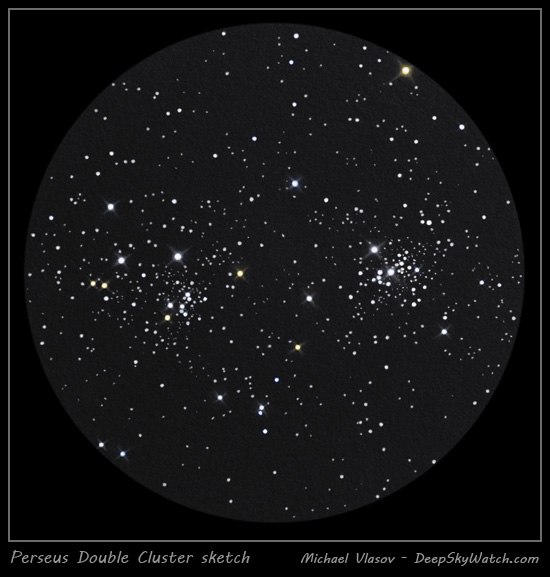
Sketch
of the NGC 884/869 Double Cluster by Michael Vlasov (Copyright © Michael
Vlasov 2016) - presented with the author's permission
My Best Own Photos
eVscope
NGC 869 (H Persei)
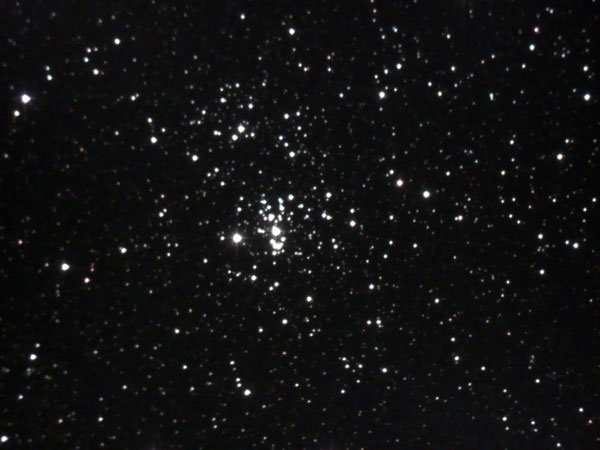 |
|
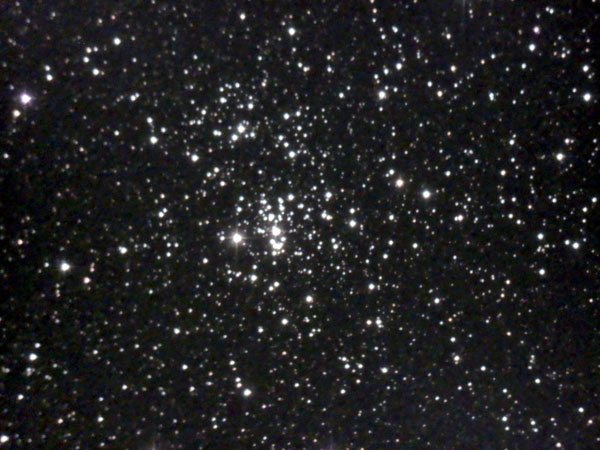 |
NGC 869 - Sep 12, 2020 |
|
NGC 869 - Sep 12, 2020, processed |
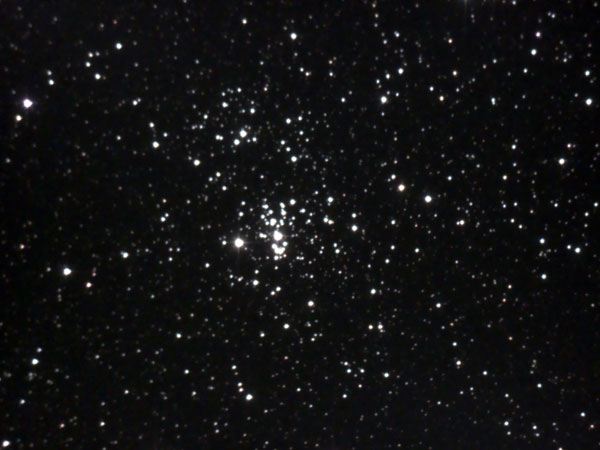 |
|
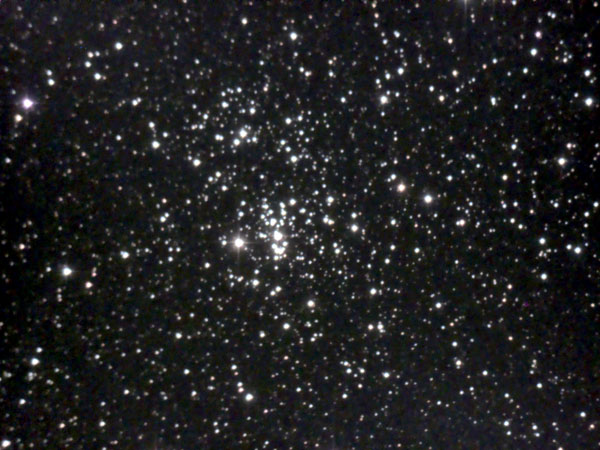 |
NGC 869 - Sep 12, 2020 |
|
NGC 869 - Sep 12, 2020, processed |
NGC 884 (Chi Persei)
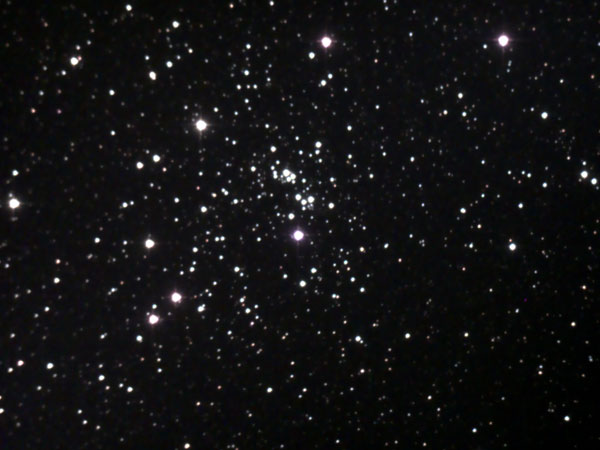 |
|
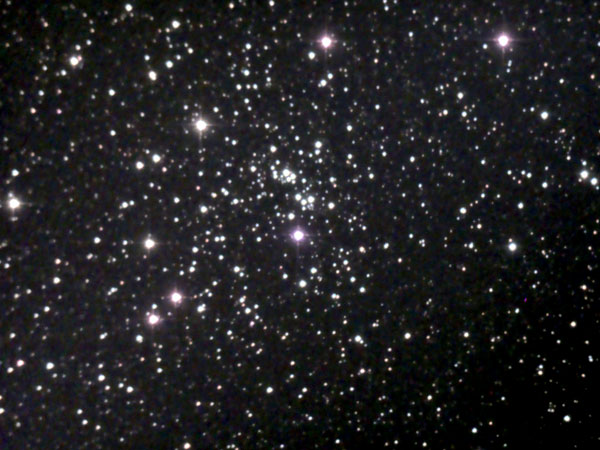 |
NGC 884 - 1Sep 12, 2020 |
|
NGC 884 - Sep 12, 2020, processed |
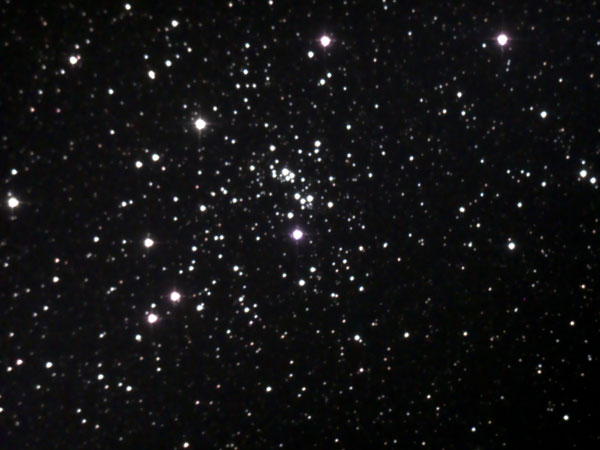 |
|
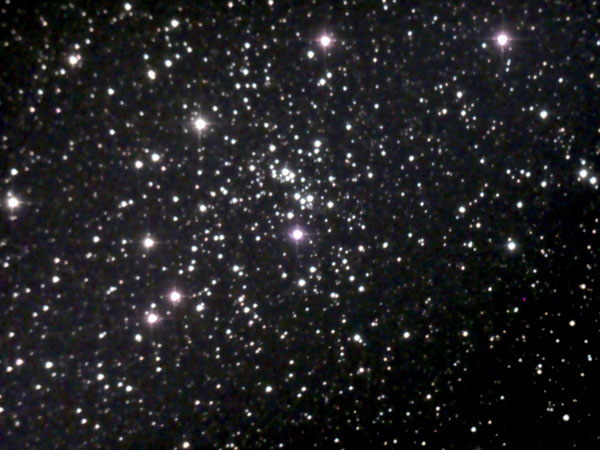 |
NGC 884 - Sep 12, 2020 |
|
NGC 884 - Sep 12, 2020, processed |
eVscope 2
NGC 869 (H Persei)
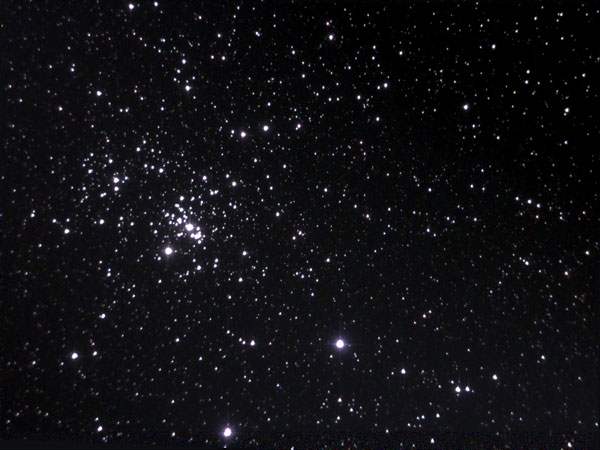 |
|
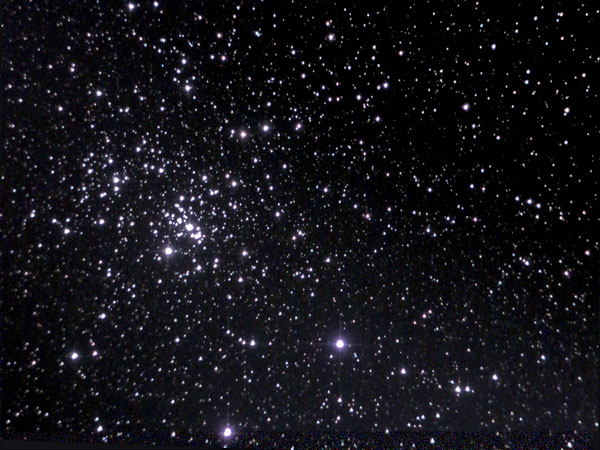 |
NGC 869 - Nov 24, 2022 |
|
NGC 869 - Nov 24, 2022, photo left processed |
NGC 884 (Chi Persei)
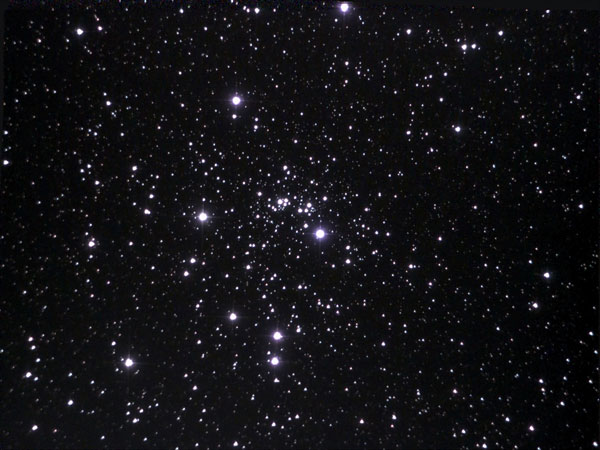 |
|
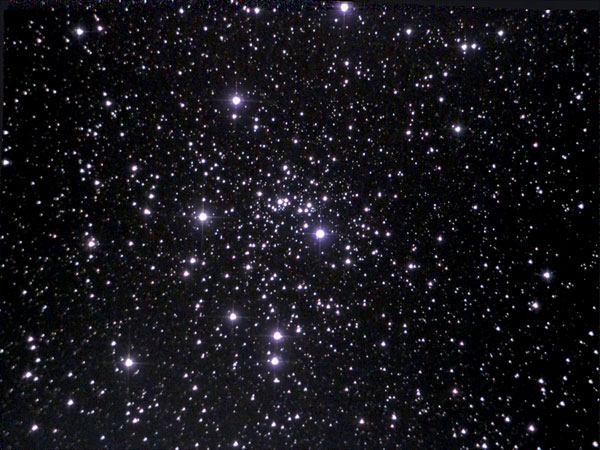 |
NGC 884 - Nov 24, 2022 |
|
NGC 884 - Nov 24, 2022, photo left processed |
Vespera
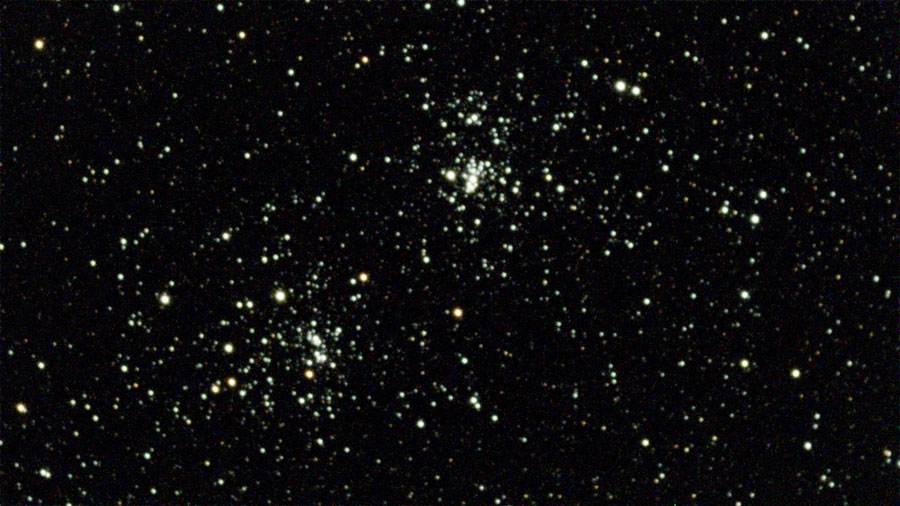 |
|
 |
NGC 884/869, Aug 12, 2022 - original (4 frames = 40s) |
|
NGC 884/869, Aug 12, 2022 - original (43 frames = 430s) |
Vespera Pro
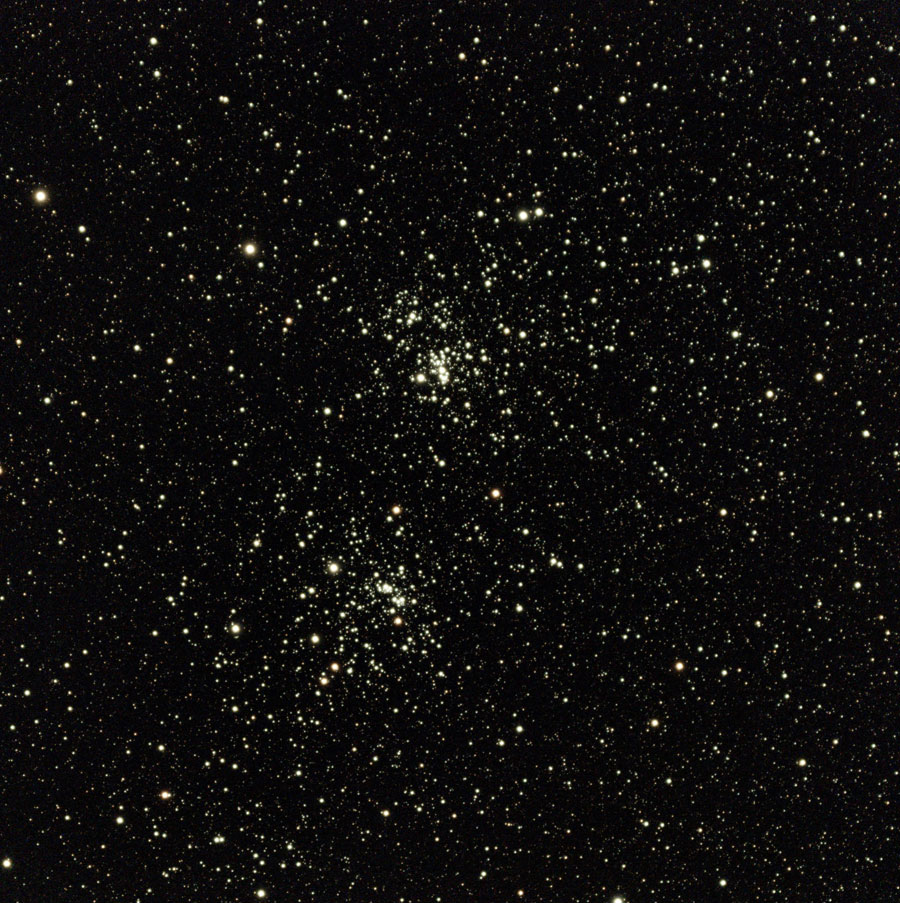 |
|
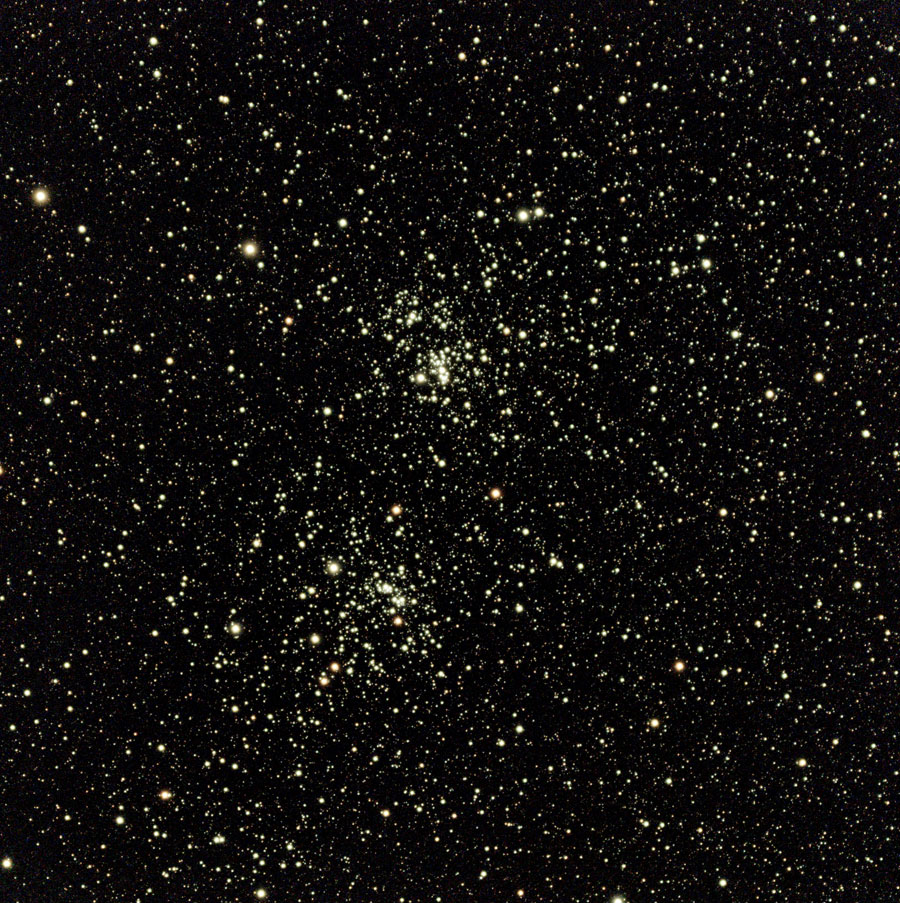 |
NGC 884/869, Nov 4, 2024 - 2000 (128 frames = 1280s) |
|
NGC 884/869, Nov 4, 2024 - 2000 (128 frames = 1280s), processed |
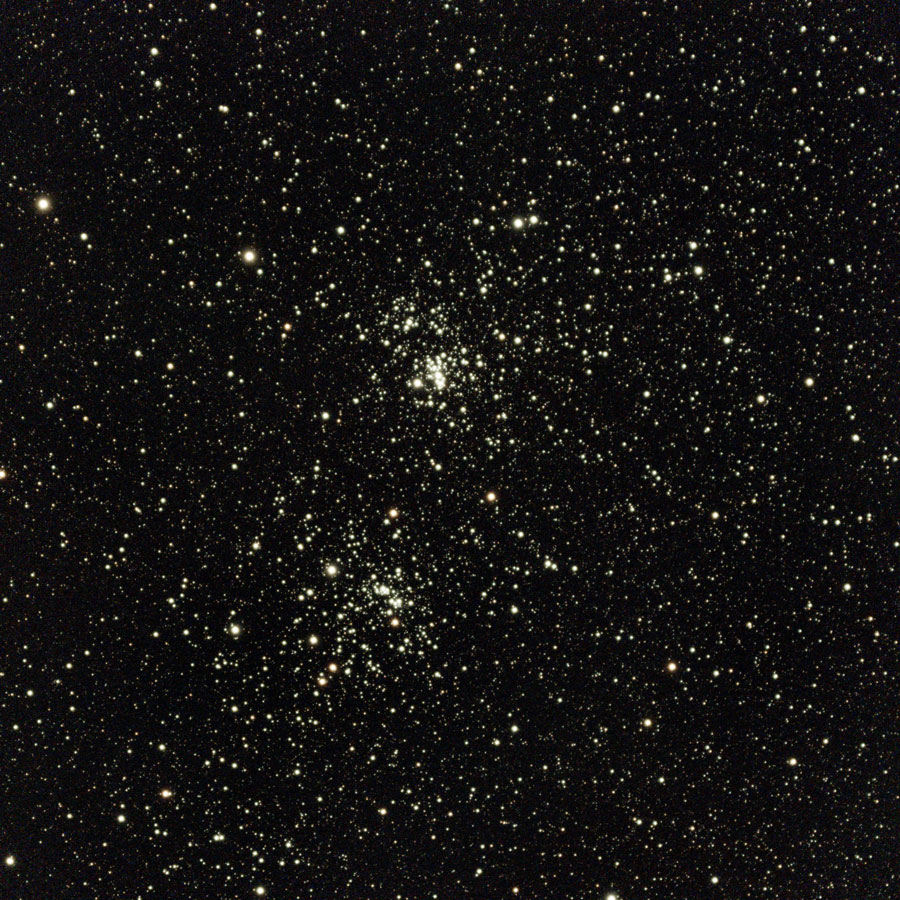 |
|
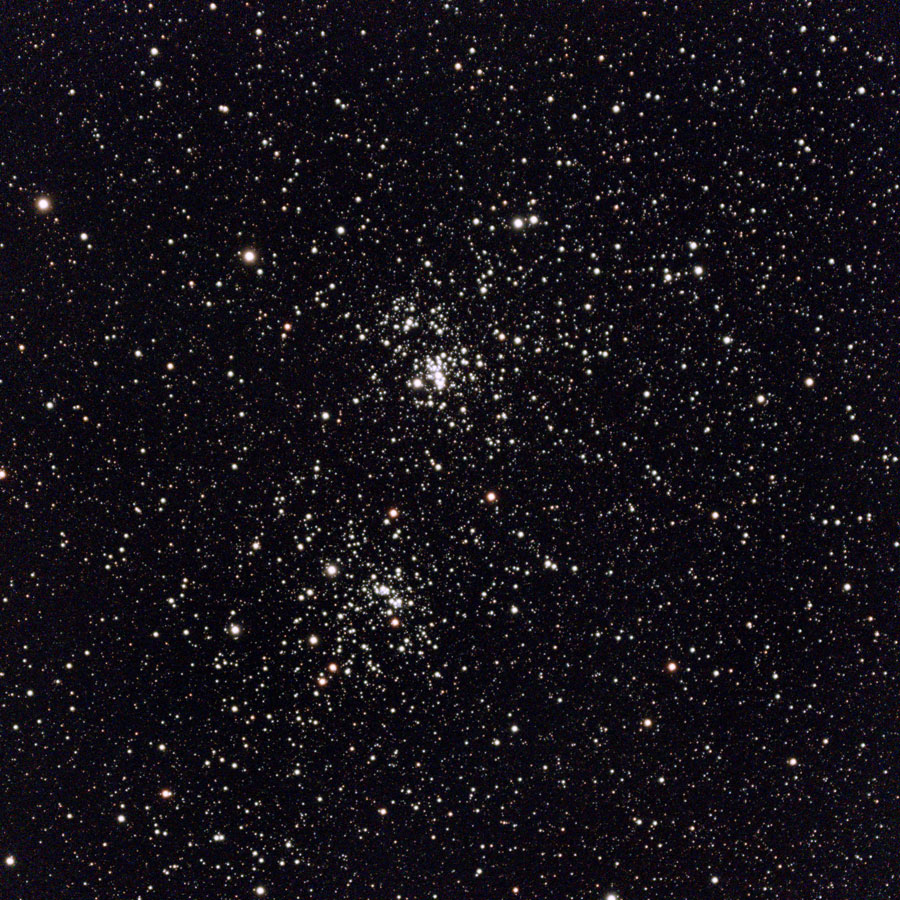 |
NGC 884/869, Nov 4, 2024 - 2000 (128 frames = 1280s), processed from TIFF |
|
NGC 884/869, Nov 4, 2024 - 2000 (128 frames = 1280s), processed from TIFF, white balance, saturation increased |
My Own Observations
Observations Summer to Autumn 2016
- Beginning
of October 2016 (Sumène, Haute Loire, France: Heritage
100P, LT binoculars): Observed Perseus Double
Cluster NGC 884/869 with Heritage
100P at various magnifications (both together at low magnifications
and one at a time at higher magnifications) and using binoculars - beautifully
seen, they were sparkling (but there the sky is particularly dark).
Observations February/March 2017
- February 15, 2017: (Mühlhausen/Kraichgau: Heritage
100P on GoTo mount,
LT binoculars): Using the GoTo mount revealed that I probably saw more
or less both clusters when I tried to observe the Perseus double cluster NGC
884/869. At first, the star clusters appeared faintly, later they
were better to see, but never as beautiful as we saw them in France in
autumn 2016, where they sparkled. But there the sky is particularly dark.
- February 18, 2017 (ditto: GSD 680):
Once again looked for the double cluster NGC 884/869 with the GSD
680, and with this telescope I was able to recognize the double cluster
well.
- March 16, 2017 (ditto: Heritage P130 on GoTo mount):
Observed NGC 884/869, but did not take any notes...
Observations September 2017
- Sep 21, 2017 (Sumène, Haute Loire, France: Heritage
100P, LT binoculars): Perseus Double
Cluster NGC
884/869 seen with the
naked eye as faint glow, observed with binoculars and Heritage
100P (24 mm), seen nicely.
- Sep 22, 2017 (Ditto: Heritage
100P, LT binoculars): Perseus Double Cluster NGC 884/869 observed
with binoculars and Heritage 100P (24
mm), seen nicely.
- Sep 29, 2017 (Ditto: LT binoculars):
Perseus Double Cluster NGC 884/869 observed with
binoculars (half moon, milky way hard to see with the naked eye).
Observations October/November 2017
- Oct 2017 (Mühlhausen/Kraichgau: LT and TS binoculars): NGC
884/869 observed
with binoculars.
- Nov 13, 2017 (Ditto): NGC 884/869 observed with binoculars.
Observations January to March 2018
- Jan 14, 2018 (Mühlhausen/Kraichgau: TS binoculars): NGC 884/869 observed
with binoculars.
- Feb 4-5, 2018 (ditto): NGC 884/869 observed with binoculars.
- Feb 12, 2018 (Mühlhausen/Kraichgau: Explorer
150PDS on Star
Discovery mount): NGC 884/869 observed with the telescope.
- Feb 13, 2018 (Mühlhausen/Kraichgau: TS binoculars): NGC 884/869 observed with binoculars.
- March 18-19, 2018 (Kellinghusen and Erkerode, TS binoculars): NGC
884/869 observed with binoculars.
Observations September - November 2018
- Sep 19, 2018 (Sumène, Haute Loire, France: PS
72/432, TS binoculars, OM21 binoculars): NGC
884/869 seen well with TS, guessed with
OM21; seen well with PS72, also at somewhat higher magnifications
- Sep 20, 2018 (Sumène, Haute Loire, France: PS
72/432, TS binoculars): NGC
884/869 seen well again
- Sep 22, 2018 (ditto): NGC
884/869 only observed briefly, because I was looking for other sky objects
- Oct 4, 2018 (ditto): NGC 884/869 observed again
- Nov 1, 2018 (Mühlhausen/Kraichgau: TS binoculars): NGC
884/869 observed with binoculars.
- Nov 11, 2018 (Mühlhausen/Kraichgau: Heritage
100P, AZ Pronto
Mount, LT binoculars): NGC
884/869 observed with telescope and LT binoculars (Astrid) on top of cemetary.
Observations September to October 2019
- September 17, 2019 (Sumène, France: OM21 binoculars, TS binoculars, LT binoculars): NGC
884/869 (Perseus Double Cluster) seen as glow with OM21, with LT/TS
binoculars even seen with "oval".
- September 20, 2019 (Sumène, France: StarTravel
120/600 on AZ
Pronto Mount): NGC 884/869 (24 mm) seen very nicely; also
seen with the naked eye
- September 29, 2019 (Sumène, France: StarTravel
120/600 on AZ
Pronto Mount):: NGC 884/869 (32 mm and 35 mm 2" eyepieces)
nice, but relatively small (19/17 x)
- September 30, 2019 (Sumène, France: StarTravel
120/600 on AZ
Pronto Mount): NGC 884/869 observed with the 35 mm ED eyepiece,
very nice.
- October 3, 2019 (Sumène, France: StarTravel
120/600 on AZ
Pronto Mount): NGC 884/869 once more observed with the 35
mm ED eyepiece, fits the field of view
including the "oval", very nice.
Observations January 2020
- January 16, 2020 (Mühhausen/Kraichgau, C8 on Star
Discovery mount): NGC 884/869 observed with the telescope
(40 mm); very nice.
- January 18, 2020 (Mühhausen/Kraichgau, C8 on AZ4
mount): NGC 884/869 nice
- January 20, 2020 (Mühlhausen/Kraichgau:C8 on Star
Discovery mount (manual)): NGC 884/869 (Perseus Double Cluster)
found and searched for the comet for a long time, but did not find it.
Observations February to November 2020
- February 5-7, 2020 (Mühlhausen/Kraichgau: eVscope): NGC
884/869 photographed
- September 12, 2020 (Mühlhausen/Kraichgau: eVscope): NGC
869 and NGC 884 one by one photographed in the new rectangular format
without overlay
- November 5, 2020 (Mühlhausen/Kraichgau: TLAPO1027 on AZ4 and AZ
Pronto mounts): NGC
869 and NGC 884 observed together; nice, "rich field" with
40 mm
Observations December 2021
- December 10, 2020 (Mühlhausen/Kraichgau: eVscope2): NGC
869 and NGC 884 one by one photographed, NGC 869 missed
- December 21, 2020 (Mühlhausen/Kraichgau: eVscope2): NGC 869 and NGC 884 one by one photographed
Observations August to November 2022
- August 12, 2022 (Erkerode:Vespera): NGC 869 and NGC 884 photographed together
- November 24, 2022 (Mühlhausen/Kraichgau: eVscope2): NGC 869 and NGC 884 photographed one by one
Observations November 2024
- November 4, 2024 (Mühlhausen/Kraichgau: Vespera Pro): NGC 869 and NGC 884 photographed together
References
Websites
On this Site

Appendix: My Own Photos
eVscope
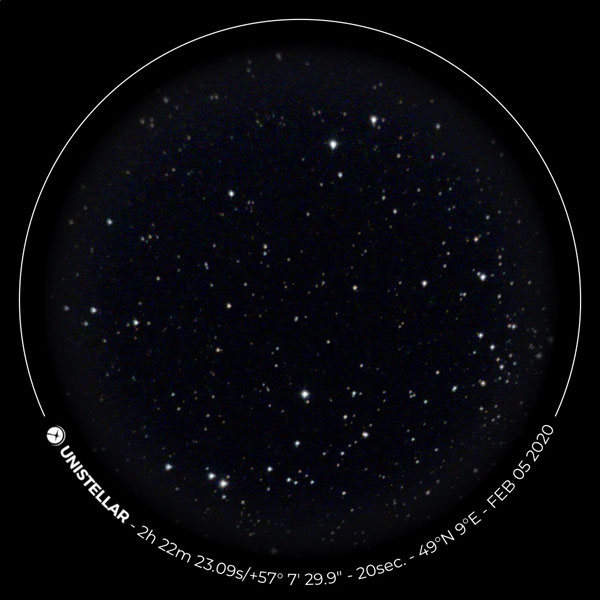 |
|
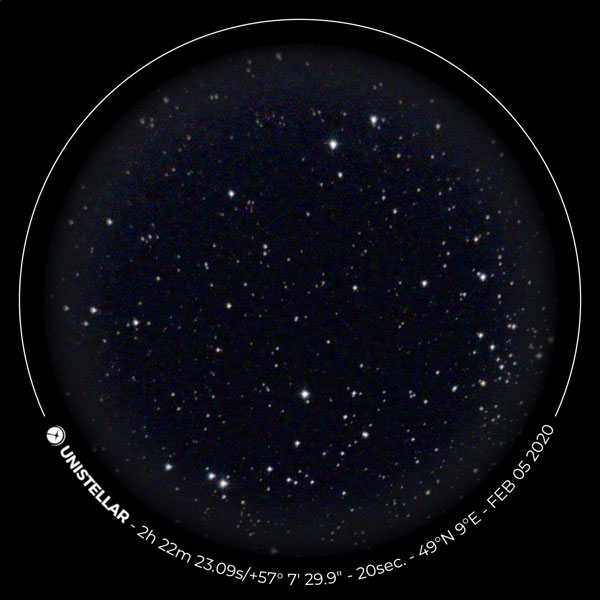 |
NGC 884/869 - Feb 5, 2020 (below NGC 884) |
|
NGC 884/869 - Feb 5, 2020, processed (below NGC 884) |
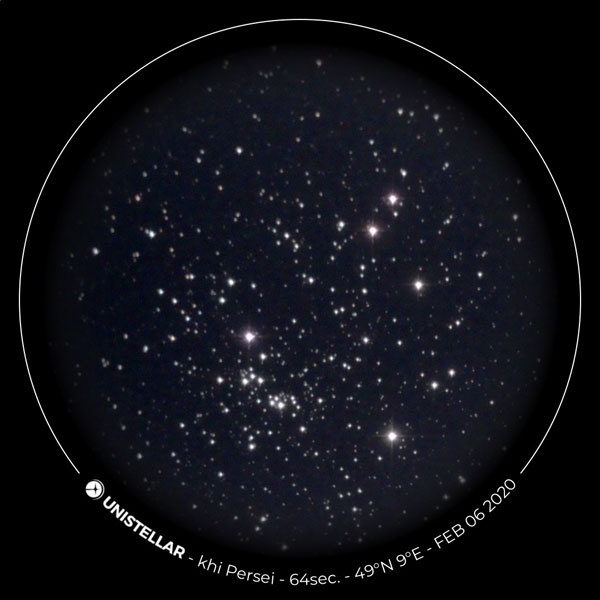 |
|
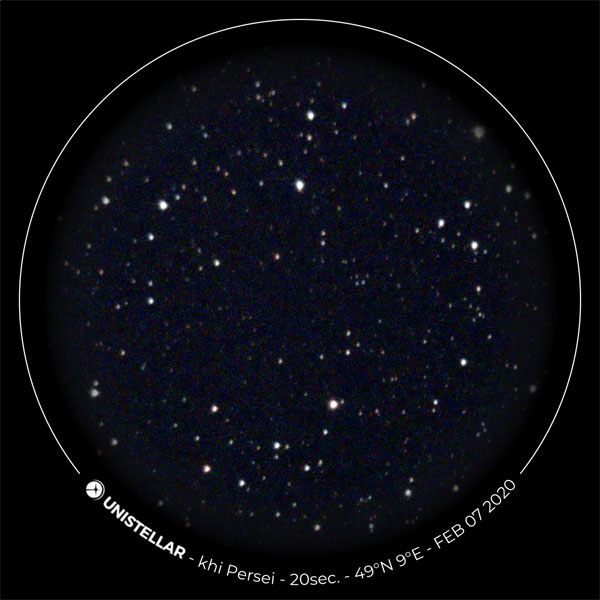 |
NGC 884/869 - Feb 6, 2020 (NGC 884) |
|
NGC 884/869 - Feb 7, 2020 (far left of NGC 884) |
NGC 869 (H Persei)
 |
|
 |
NGC 869 - Sep 12, 2020 |
|
NGC 869 - Sep 12, 2020, processed |
 |
|
 |
NGC 869 - Sep 12, 2020 |
|
NGC 869 - Sep 12, 2020, processed |
NGC 884 (Chi Persei)
 |
|
 |
NGC 884 - 1Sep 12, 2020 |
|
NGC 884 - Sep 12, 2020, processed |
 |
|
 |
NGC 884 - Sep 12, 2020 |
|
NGC 884 - Sep 12, 2020, processed |
eVscope 2
NGC 869 (H Persei)
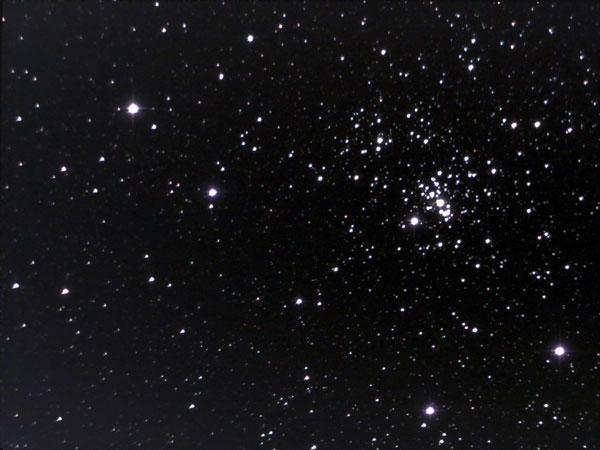 |
|
 |
NGC 869 - Dec 10, 2021 |
|
NGC 869 - Dec 10, 2021, Astrometry: hit |
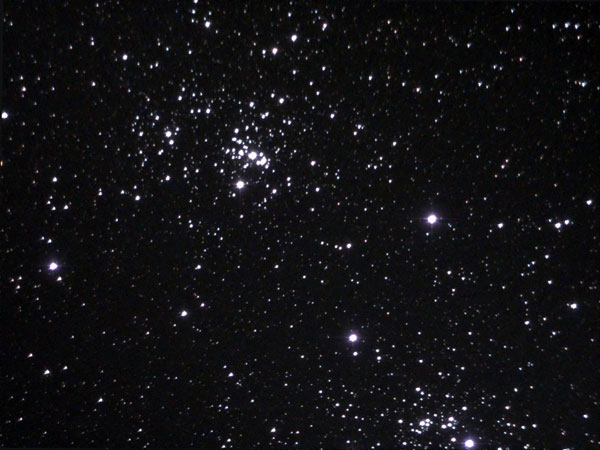 |
|
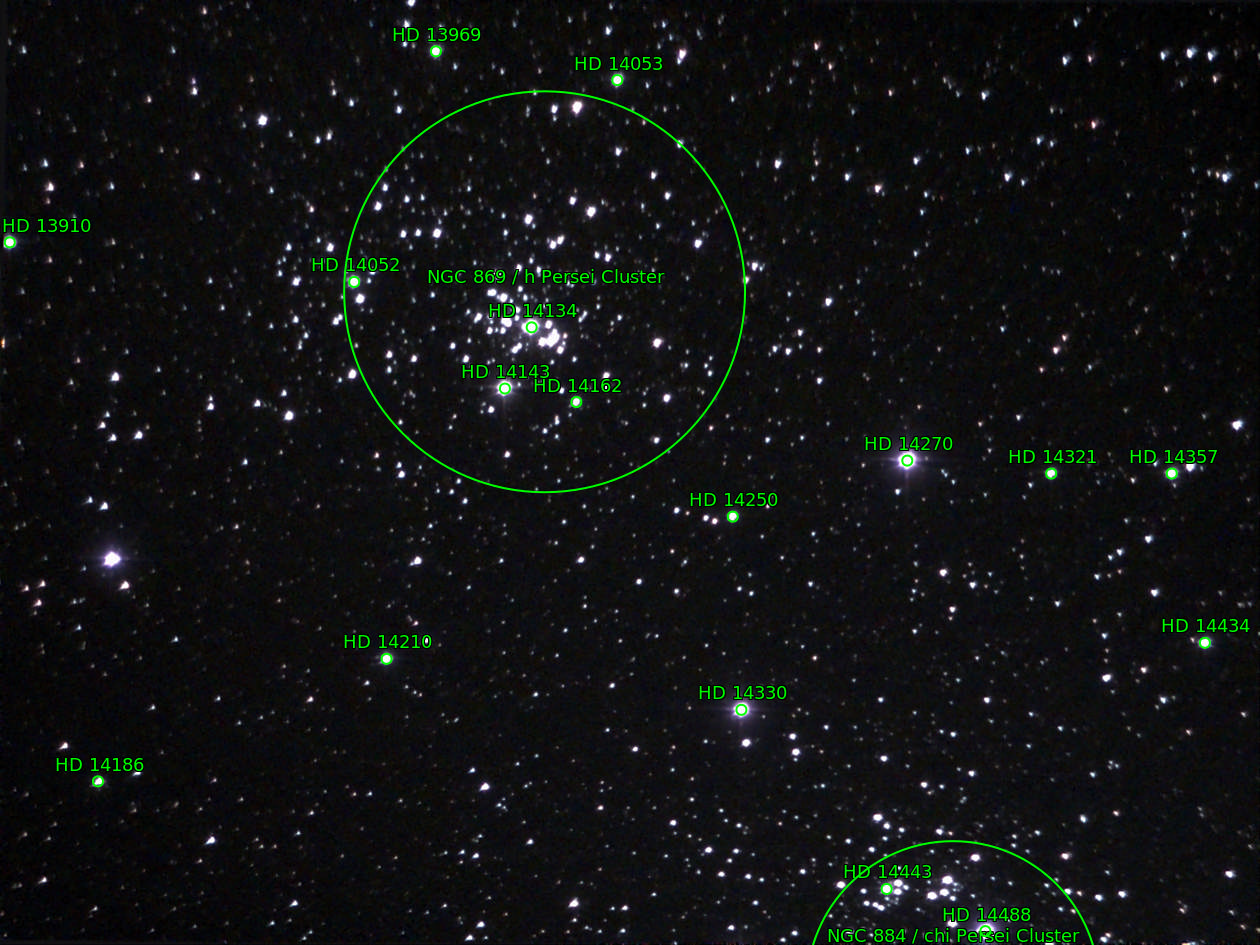 |
NGC 869 - Dec 21, 2021 |
|
NGC 869 - Dec 21.2021, Astrometry: hit |
 |
|
 |
NGC 869 - Nov 24, 2022 |
|
NGC 869 - Nov 24, 2022, photo left processed |
NGC 884 (Chi Persei)
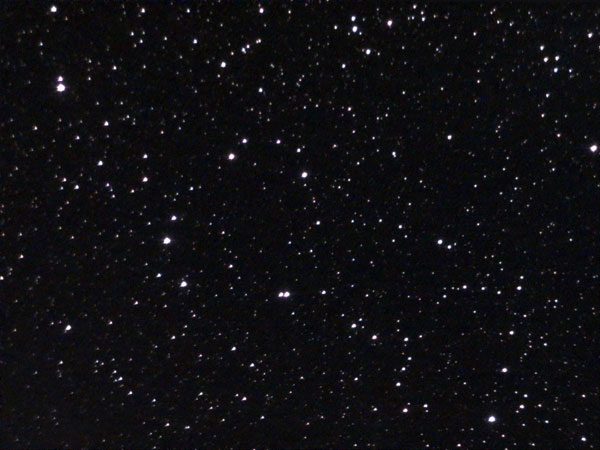 |
|
 |
NGC 884 - Dec 10, 2021 |
|
NGC 884 - Dec 10, 2021, Astrometry: missed |
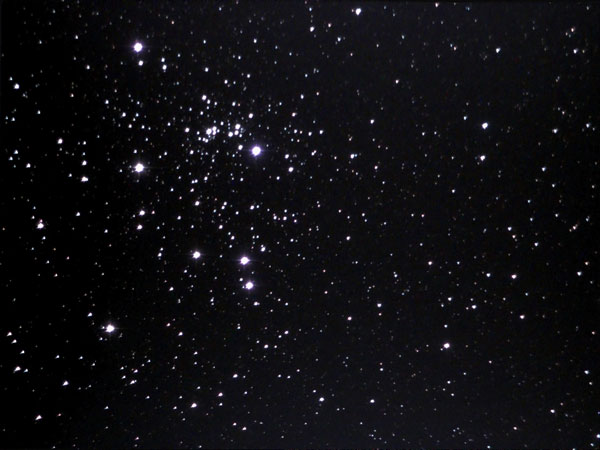 |
|
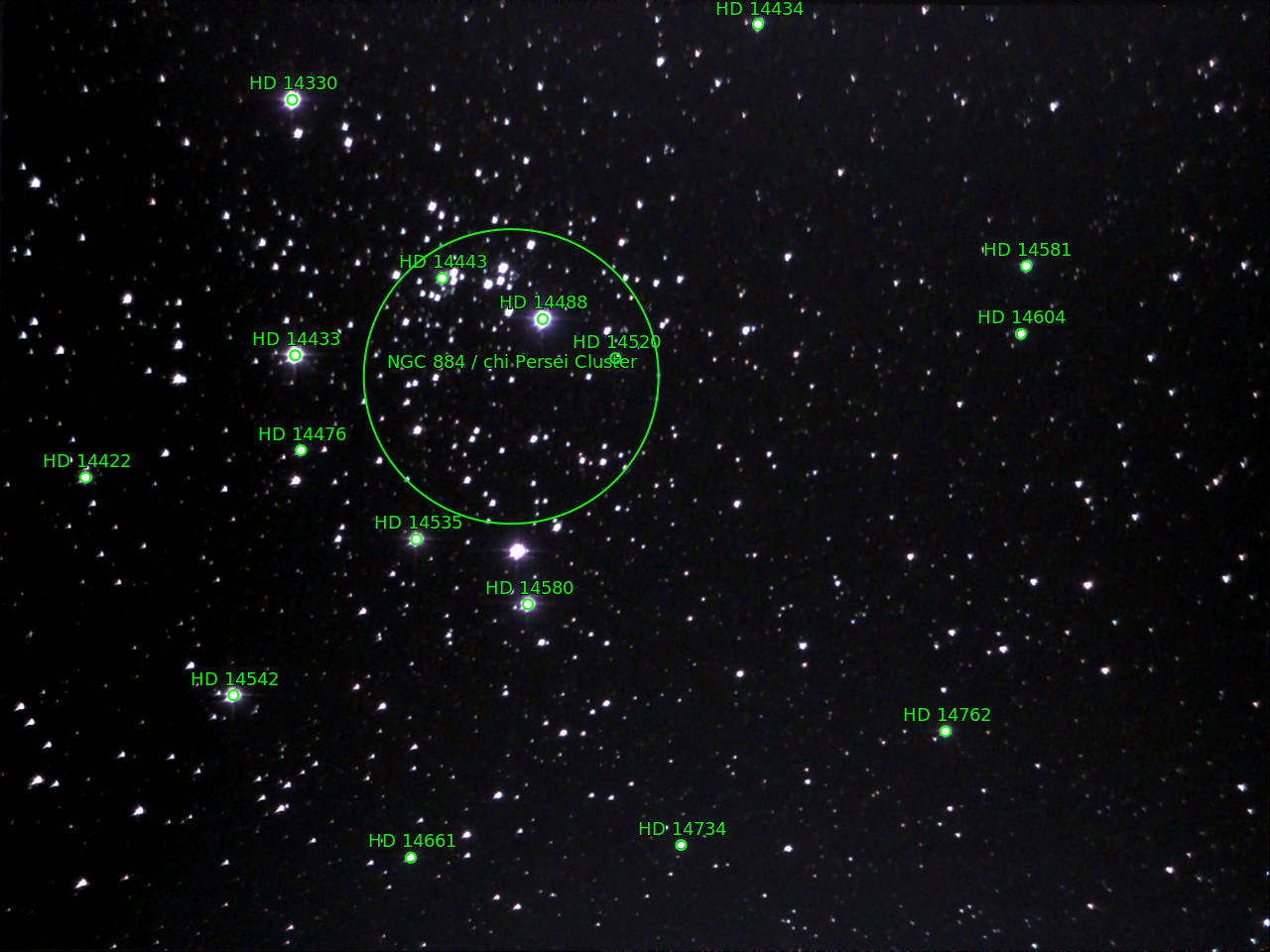 |
NGC 884 - Dec 21, 2021 |
|
NGC 884 - Dec 21, 2021, Astrometry: hit |
 |
|
 |
NGC 884 - Nov 24, 2022 |
|
NGC 884 - Nov 24, 2022, photo left processed |
Vespera
 |
|
 |
NGC 884/869, Aug 12, 2022 - original (4 frames = 40 seconds) |
|
NGC 884/869, Aug 12, 2022 - original (43 frames = 430 seconds) |
Vespera Pro
 |
|
 |
NGC 884/869, Nov 4, 2024 - 2000 (128 frames = 1280s) |
|
NGC 884/869, Nov 4, 2024 - 2000 (128 frames = 1280s), processed |
 |
|
 |
NGC 884/869, Nov 4, 2024 - 2000 (128 frames = 1280s), processed from TIFF |
|
NGC 884/869, Nov 4, 2024 - 2000 (128 frames = 1280s), processed from TIFF, white balance, saturation increased |


















































